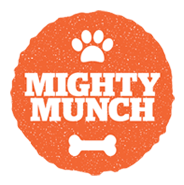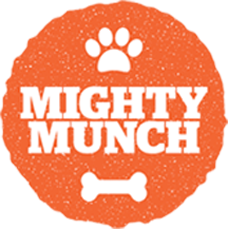
If our dogs could talk, life would be a whole lot easier! Sometimes, you know there’s something not quite right with your furry friend, but aren’t sure what it is. It can be so frustrating when you know your dog needs help, but you don’t know how to give it to them or what the problem is.
Joint pain is one of those things that may or may not be obvious in your dog. Some dogs may visibly limp or have obviously swollen joints, while others may act normally despite their pain. It’s important that you learn how to identify joint pain in your pup, so you can make sure they get the treatment and care they need to get back to their usual bouncy self.
So, what are the signs your dog has joint pain? Today, we’re going to show you how to tell if your dog has joint pain and discuss some common dog joint pain symptoms you need to be aware of. By learning how to recognize your pup’s joint pain, you can become an even better pet parent and treat your dog’s achy joints as soon as you see the first symptoms.
The Importance of Recognizing the Signs Your Dog Has Joint Pain
Recognizing the signs your dog has joint pain is critical for their well-being. By identifying joint pain early, you can act quickly to alleviate discomfort, improve mobility, and get that tail wagging again before you know it.
Early intervention and treatment can slow down the progression of joint pain and certain underlying conditions, prevent secondary complications, and give your dog the best chance of living a longer, healthier life.
How to Tell if Your Dog Has Joint Pain: Most Common Dog Joint Pain Symptoms
Learning how to tell if your dog has joint pain can be challenging as dogs often try to hide their discomfort. It’s important to stay vigilant and learn how to observe your pup for classic dog joint pain symptoms. Here’s what you should keep an eye out for.
Recognizing Behavioral Changes: Changes in Activity Levels and Mood
Dogs experiencing joint pain often display noticeable behavioural changes. Watch your dog for changes in their activity levels and overall mood. If your typically active and playful dog becomes less enthusiastic about physical activities they once enjoyed, it could be a sign of joint pain. They might show reluctance to go on walks, play fetch, or run and jump.
Dogs in pain may also exhibit mood changes like increased irritability, restlessness, or signs of depression. You might notice that your dog seems disinterested in their favourite toys or activities or becomes more clingy than normal. If you see any of these behavioural shifts, don’t rule out joint pain.
Physical Signs: Limping, Difficulty Moving, and Other Visible Symptoms
Physical signs your dog has joint pain include limping or favouring a particular limb while walking or running. Dogs with joint pain may show stiffness, especially after resting or upon waking up in the morning. They may struggle to stand up, climb stairs, or jump onto furniture.
You might also observe visible swelling or redness around the affected joints. The muscles around your dog’s joints may also become smaller due to inactivity, though this usually doesn’t occur unless your dog has had untreated joint pain for several months or longer.
Subtle Symptoms: Reduced Appetite, Changes in Sleeping Habits, and Other Indicators
As well as the behavioural and physical dog joint pain symptoms, there are subtler signs that can indicate joint pain in dogs. A reduced appetite or loss of interest in food may occur due to the discomfort caused by standing or leaning over their food bowl.
Changes in sleeping habits can also be indicative of joint pain. Your dog may have difficulty finding a comfortable position to rest, leading to restlessness or disturbed sleep. Excessive licking or chewing at the joints can be another subtle sign of joint pain as dogs may instinctively try to alleviate the discomfort.
The Challenges in Identifying the Signs Your Dog Has Joint Pain
Unfortunately, recognizing the signs your dog has joint pain isn’t always easy. But why? Let’s take a look at why recognizing joint pain in dogs is harder than identifying the same painful condition in a person.
Inability to Communicate Directly
Unfortunately, our dogs can’t talk to us yet. This is one of the biggest challenges when it comes to learning how to tell if your dog has joint pain. Unlike people, dogs can’t tell us when they are experiencing discomfort or pain. This means you have to use your observational powers to recognize the physical and behavioural dog joint pain symptoms in your pup.
Dogs and Pain: Understanding Their Pain Tolerance
Dogs have a unique pain tolerance, which can make it even more complicated to identify their joint pain. Many dogs have an instinct to hide their pain or discomfort, a survival trait inherited from their wild ancestors. Even dogs experiencing significant pain may exhibit stoic behaviour and continue to act normally, so it’s important for pet owners to stay alert to even subtle physical or behavioural changes.
Misinterpretations: Commonly Overlooked Signs of Joint Pain in Dogs
Some of the signs your dog has joint pain can be easily overlooked or misinterpreted as general aging or behavioural changes. For example, reduced activity levels may be attributed to getting older rather than joint pain. Dogs may also alter their gait or avoid activities that exacerbate the pain, leading to the assumption that they are simply being lazy or disinterested.
Complications: Other Health Issues That May Mimic Joint Pain Symptoms
Dog joint pain symptoms can overlap with those of other health issues, making it harder to correctly identify joint pain in your dog. Muscle injuries, spinal problems, or neurological disorders may produce similar signs, including limping, difficulty moving, or changes in behaviour.
If You Notice the Dog Joint Pain Symptoms, Here’s What You Should Do…
Now that you know how to recognize the signs your dog has joint pain, what should you do if you see your dog exhibiting these? Here are the key steps you can follow when you notice dog joint pain symptoms in your pup.
Tips for Immediate Relief
If your dog is experiencing joint pain, there are some quick steps you can take to give them temporary relief. Applying a cold compress or ice pack wrapped in a towel to the affected joint can help reduce inflammation and soothe the area. Make sure the compress is not too cold and limit the treatment to 10-15 minutes at a time.
Also, check that your dog has a comfortable, supportive resting area, like the best calming dog bed you can find. This can help reduce the pressure on your dog’s joints, making them more comfortable and easing their pain.
Get Them on Mighty Munch Joint Supplements
As soon as you see dog joint pain symptoms in your pup, it’s essential to add joint supplements to their diet. Joint supplements can relieve the symptoms of joint pain, and also protect the joints from further damage, making them an essential addition to your dog’s food bowl.
At Mighty Munch, we have the top-rated hip and joint supplements for dogs in Australia. Manufactured in a human-grade facility using top-quality ingredients, our supplements exceed Australia’s pet safety standards. Our recipes are formulated by vets, with powerful ingredients like chondroitin, MSM, and glucosamine which all play critical roles in dog joint care.
Whether you’re wondering how to help a dog with arthritis or looking for an effective dog joint pain home remedy, Mighty Munch has supplements that will actually make a difference. As well as having the best joint supplement for dogs, make sure you check out our collagen for dogs, which is widely regarded as the best collagen for dogs in Australia.
The Role of Diet and Exercise
Your dog’s diet can play a huge role in their joint health. As well as adding joint supplements from Mighty Munch to your dog’s diet, make sure they’re eating a balanced diet full of the best vitamins for dogs, and consider adding probiotics for overall digestive health. You can find the best dog probiotics at Mighty Munch, designed to boost your dog’s gut health, immune system, and overall energy.
Maintaining a healthy weight is crucial to reduce the strain on your dog’s joints. Low-impact exercises, such as leisurely walks or swimming, can help improve muscle strength and joint flexibility without putting any additional strain on your dog’s joints.
Environmental Adjustments
Making adjustments to your dog's environment can help minimize the impact of joint pain. Set up ramps for easier access to your couch or car, eliminating the need for your dog to jump. Use non-slip mats or carpets on slippery surfaces like kitchen tiles to prevent accidental slips and falls, and elevate food and water bowls so your dog doesn’t have to bend down to use them.
When to Seek Veterinary Care
While the above measures can provide temporary relief, it may be necessary to ask your vet how to tell if your dog has joint pain. If your dog’s symptoms appear to be getting worse, or you find yourself asking when to give dog probiotics or should I give my dog collagen, it’s best to consult a vet as they can provide you with specific answers for your pup.
Vets are trained professionals and may pick up on subtle symptoms you missed, like a dog swollen joint front leg, or a dog swollen hock joint but no pain. Your vet may prescribe pain medication, recommend physical therapy, or suggest further diagnostic tests such as X-rays or blood work to gain a clearer understanding of your pup's joint health.
Closing Thoughts on How to Tell if Your Dog Has Joint Pain
By learning how to tell if your dog has joint pain, you can take the important steps of treating your dog and getting them back to a pain-free life as quickly as possible. By adding a joint supplement to your dog’s diet, you can relieve the painful symptoms of joint issues, and help prevent your pup’s joints from deteriorating further.
You can find the best joint supplements for Aussie dogs here at Mighty Munch, as well as other dog supplements in Australia like our probiotics for dogs. We also have other pet essentials, like our top-rated calming dog bed, to soothe even the most anxious pup. For accidents on your carpet or furniture, you can’t go past our pet odour remover.
Find everything you need to keep your dog happy, healthy, and by your side for years to come. Shop Mighty Munch today!


